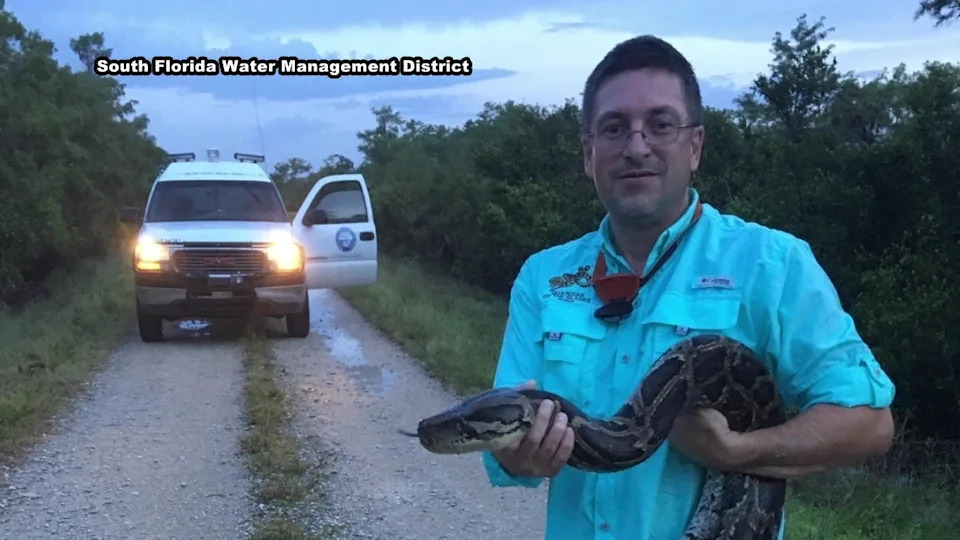The Brief
-
Florida scientists are deploying robotic rabbits to lure and detect Burmese pythons.
-
The invasive snakes have caused catastrophic declines in native wildlife populations.
-
The tech-enabled decoys mimic heat, movement, and scent to trick the snakes into revealing their hiding spots.
TAMPA – Burmese pythons have become one of Florida’s most destructive invasive species, devastating native wildlife in the Everglades. Now, biologists are turning to an unexpected new ally in their battle: robotic rabbits.
The South Florida Water Management District has unveiled a new python detection strategy using lifelike mechanical bunnies. These decoys are designed to mimic the movement, heat signature, and even the scent of real rabbits—three key cues pythons use to hunt.
The backstory
Since the 1990s, species like raccoons, possums, and bobcats have seen population declines of 87–99% in areas infested with Burmese pythons. Traditional removal methods have struggled because the snakes are so hard to detect in the dense vegetation of the Everglades.
READ: Veterinarians are warning against invasive, toxic cane toads this rainy season
Mike Kirkland, the district’s lead invasive animal biologist, originally tested the idea with live rabbits in protected cages. Though successful, that approach required significant time and resources to care for the animals.

What they’re saying
“This project started with putting live rabbits in pens out in the field,” Kirkland said. “These rabbits were kept alive and well… given food, water, shelter, and even toys for enrichment.”
With robotic replacements, the project has scaled in a more sustainable direction. “Pythons pick up on heat signatures, movement, and likely scent,” Kirkland explained. “The robotic rabbits now check all three boxes.”
Data
Raccoon population drop: 99%.
Possum decline: 98%.
Bobcat decline: 87%.
Pythons removed from the Everglades since 2000: More than 19,000 (FWS data).
What’s next
Each robotic rabbit will be paired with a camera system powered by artificial intelligence that can detect nearby pythons. When a snake is spotted, the system will alert wildlife officials to come and capture it.
Kirkland says they hope to expand the use of robotic rabbits by next summer—especially in environmentally sensitive areas most at risk from python predation.
CLICK HERE:>>>Follow FOX 13 on YouTube
The Source
Information for this story is based on an interview with Mike Kirkland, Lead Invasive Animal Biologist with the South Florida Water Management District, and data from wildlife studies on invasive species in the Everglades. Reporting by FOX 13’s Jordan Bowen.
